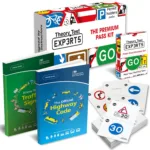Strategies to Overcome Driving Anxiety as a Learner Driver
Many learner drivers face driving anxiety during their lessons and practice sessions. It’s a common challenge that can hinder progress and make driving feel overwhelming. Fortunately, there are effective strategies you can employ to reduce anxiety and build confidence behind the wheel.
First, it’s essential to understand the source of your anxiety. Identifying specific triggers can help you address them directly. For instance, are you anxious about driving in heavy traffic, navigating roundabouts, or maybe it’s being judged by others? Recognizing these factors allows you to tackle them one step at a time.
One practical approach is to familiarize yourself with your vehicle. Spending time getting to know the dashboard controls, the car’s dimensions, and even practicing simple maneuvers in an empty parking lot can significantly boost your comfort level. This hands-on experience makes you feel more at ease when you’re actually on the road.
Gradual exposure is another effective technique. Start by driving in low-pressure environments, like quiet residential streets or during off-peak hours. As your confidence grows, gradually expose yourself to busier roads, complex intersections, and more challenging driving conditions. Each successful trip will reinforce your abilities and reduce anxiety over time.
Setting realistic goals also plays a crucial role in overcoming anxiety. Instead of focusing on mastering everything at once, break your driving practice into smaller, manageable tasks. For example, one session could be solely focused on parking, while another targets highway driving. Celebrate your achievements, no matter how small, to foster a sense of accomplishment.
Involving someone you trust can provide additional support. Having a friend or family member accompany you during practice can be reassuring. They can help you stay calm and provide constructive feedback. Choose someone who will encourage and support you rather than judge your skills.
Mindfulness and relaxation techniques can also be beneficial. Before you start driving, take a few deep breaths, practice grounding techniques, or even engage in a short meditation session. These practices can help clear your mind of anxiety and create a more focused and calm driving experience.
Consider professional help if your anxiety feels overwhelming. Engaging with a driving instructor who specializes in anxious learners can provide tailored strategies and a more supportive learning environment. They can offer additional techniques and perspectives that are specific to your situation.
Visualize success. Taking a few moments to visualize yourself driving confidently can positively impact your mindset. Picture handling various driving scenarios with ease. This mental practice can help you build self-assurance over time.
- Understand your anxiety triggers
- Familiarize yourself with the vehicle
- Gradual exposure to challenging situations
- Set realistic, achievable goals
- Involve a supportive companion
- Practice mindfulness and relaxation techniques
- Consider professional guidance
- Visualize positive outcomes
Patience is key in this journey. Building confidence as a learner driver takes time, so don’t rush the process. Understand that feeling anxious is a normal response, and with consistent practice and the right strategies, you can overcome your fears.
Resources such as the Driving Test Success provide excellent tools and insights to further aid in your learning process. Another valuable site is NHS Mental Health, which offers tips specifically designed to address anxiety related to driving.
As you embark on your driving journey, remember that every driver started somewhere. Using these strategies will help you manage anxiety and grow into a confident driver. Stay focused on your progress, and don’t hesitate to seek help when needed. Happy driving!
Understanding the Causes of Driving Anxiety
Driving anxiety can affect many people, especially learner drivers. This fear can stem from various sources, and understanding these causes can help you manage and overcome this anxiety. Let’s look into the key reasons why driving anxiety may manifest.
Fear of Accidents
One of the biggest causes of driving anxiety is the fear of getting into an accident. New drivers may be particularly sensitive to this anxiety as they often feel less confident in their driving skills. This fear can be amplified by stories of accidents they hear from friends or on the news, making the prospect of driving feel overwhelmingly dangerous.
Lack of Experience
Inexperience on the road can contribute significantly to anxiety levels. For many learners, the combination of unfamiliar controls, traffic rules, and road conditions can be daunting. The more you drive, the more comfortable you’ll become, but the initial stages can feel frightening.
Peer Pressure and Judgement
Learning to drive often comes with added pressure from peers or family members. You might fear making mistakes in front of others, worrying how they may judge your skills. This pressure can lead to performance anxiety, where the fear of being evaluated negatively affects your confidence behind the wheel.
Unfamiliar Environments
Driving in new or unfamiliar areas can heighten anxiety. Not knowing where to go or how to handle complex intersections can create a sense of panic. Learning to navigate these environments safely takes time and patience, but the initial fear can be overwhelming for many.
Physical Symptoms of Anxiety
Often, the physical effects of anxiety, such as increased heart rate, sweating, or nausea, can create a negative feedback loop. If you experience these symptoms while driving, it can make you feel even more anxious about getting behind the wheel. Learning relaxation techniques can help manage these symptoms when they arise.
Mental Health Factors
For some, anxiety is tied to broader mental health issues, such as generalized anxiety disorder or social anxiety. If someone has a predisposition to anxiety, they might find driving to be an additional trigger. Addressing these mental health challenges through professional support or therapy can help mitigate driving-related fears.
Strategies to Combat Driving Anxiety
Recognizing the causes of driving anxiety is the first step in overcoming it. Here are some effective strategies to help manage your anxiety:
- Take a Safe Driving Course: Enrolling in a driving school can boost confidence through structured lessons.
- Practice Gradually: Start in a quiet environment and gradually move to busier roads.
- Use Relaxation Techniques: Breathing exercises, meditation, or yoga can help calm your nerves before driving.
- Focus on the Present: Staying present can keep worries about past accidents or future mistakes at bay.
- Talk to Someone: Sharing your fears with friends, family, or a therapist can help normalize your experience.
Understanding the core causes of driving anxiety can be transformative. Facing these fears and taking step-by-step approaches can lead to a healthier relationship with driving. By taking action and employing various techniques to build your confidence, you can turn your anxiety into assurance.
For more detailed insights on overcoming driving anxiety, visit Verywell Mind and NHS Mental Health.
If you’re still struggling with driving anxiety, consider consulting with a professional who specializes in anxiety or specializing in driving education. Many professionals offer tailored programs to help new drivers overcome their specific fears and anxieties.
With practice and persistence, you can turn driving into a more enjoyable experience while reducing anxiety along the way. Embrace the journey at your own pace, and remember that it’s completely normal to feel nervous as you learn to drive.
The Role of Preparation in Building Confidence Behind the Wheel
Gaining confidence behind the wheel is a common challenge for learner drivers. Often, the key to overcoming this hurdle lies in thorough preparation. When you equip yourself with knowledge and skills, the experience becomes less daunting and more empowering. This article explores various preparation techniques that can help you build the confidence you need to drive with ease.
Before you even sit in the driver’s seat, it’s beneficial to understand the vehicle you’ll be driving. Familiarize yourself with the essential controls, including the steering wheel, pedals, and dashboard instruments. Knowing where everything is and how each function works can significantly reduce anxiety. For example:
- Learn how to adjust your seat and mirrors for optimal visibility.
- Understand the functions of lights, wipers, and turn signals.
- Practice using the parking brake and gear shift.
Another essential area of preparation is understanding traffic laws and road signs. Knowledge is power, especially when it comes to driving. Consider studying the local driver’s handbook or enrolling in a driving school. This way, you will not just memorize the rules but understand their importance in promoting safety on the road. Utilize resources like AAMVA to find guidelines and legal requirements based on your state or region.
Mental preparation is equally important. Take time to visualize yourself driving confidently. Imagine navigating traffic, making turns, and parking with precision. Visualization can be a powerful tool that helps reduce anxiety and builds self-assurance. Try to allocate a few minutes each day to visualize scenarios that typically cause you stress while driving.
When you feel ready to take the wheel, consider starting your practice in a quiet area. Choose a less trafficked neighborhood or an empty parking lot. This lower-pressure environment allows you to focus on mastering basic driving skills without the added stress of busy roads. As you become more comfortable, gradually introduce yourself to busier streets.
One great way to build confidence is through practice. The more you drive, the more familiar and manageable it will feel. However, it’s crucial to practice in increments. Avoid overwhelming yourself with long driving sessions at the beginning. Instead, set realistic goals, such as:
- Driving for 10–15 minutes every couple of days.
- Working on specific maneuvers like parallel parking or making turns.
- Progressing to longer drives as your comfort level increases.
Your mindset plays a significant role in how you approach driving. Keep track of your achievements, no matter how small. Celebrate those moments of success, as they will gradually contribute to your driving confidence. Journaling your experiences can help you recognize progress and cope with challenges more effectively.
If you feel you need additional support, consider driving with a trusted friend or family member. Having someone you trust alongside can provide reassurance and constructive feedback. Additionally, you can book lessons with a professional instructor who can offer invaluable tips and techniques tailored to your needs. For professional guidance, check out Driving-Schools.com for options available in your area.
Technology can also assist you in building driving confidence. Various apps offer simulated driving experiences or quizzes to test your knowledge of road signs and driving rules. These resources can supplement your education and reinforce your skills in a modern way. For example, consider using apps like Driving-Tests.org for practice tests that can help you get ready for your driving exam.
Don’t forget the importance of a well-maintained vehicle. Before hitting the road, check that the tires, brakes, and lights are all functioning correctly. Knowing your vehicle is in perfect working order will not only help ease worries but also enhance your overall driving experience.
Building confidence behind the wheel as a learner driver takes time and effort, but preparation is the foundation of success. With a solid plan in place, practice, and the right mindset, you will transition from anxiety to confidence in no time. Just remember, every expert was once a beginner, and with patience and persistence, you will get there.
Techniques for Managing Stress While Driving
Driving can often evoke a range of emotions, especially for new drivers. Managing stress while behind the wheel is crucial for a safe and enjoyable experience. With practice and the right techniques, you can significantly reduce your stress levels. Here are some effective strategies that can help you stay calm and focused.
1. Prepare Yourself Mentally
Before getting into the car, take a few moments to breathe deeply and center your thoughts. Practice relaxation techniques, such as:
- Deep Breathing: Inhale for a count of four, hold for four, and exhale for four. Repeat this a few times to calm your nerves.
- Visualization: Imagine yourself driving confidently and smoothly. Picture the experience as pleasant and stress-free.
- Affirmations: Use positive affirmations like “I am a capable driver” or “I am in control” to boost your confidence.
2. Familiarize Yourself with Your Vehicle
Knowing your car inside and out can ease anxiety. Spend time adjusting your seat, mirrors, and understanding the dashboard controls. Here are some tips:
- Practice driving in an empty parking lot to get a feel for how your vehicle handles.
- Learn how to operate essential features, such as the headlights, windshield wipers, and air conditioning.
3. Pick the Right Time and Place
Your driving environment matters greatly. To minimize stress:
- Choose quiet times to drive, especially if you’re learning. Early mornings or late evenings usually have less traffic.
- Select routes that you feel comfortable with, gradually challenging yourself with busier roads as you gain confidence.
4. Set Manageable Goals
Set achievable driving goals to keep your spirits high. Focus on small milestones, for instance:
- Make it a goal to drive a certain distance without anxiety.
- Challenge yourself to master one new skill each week, like parallel parking or night driving.
5. Use Soothing Music
Listening to calming music can help reduce stress. Create a playlist with your favorite feel-good songs that help you relax. Avoid loud or aggressive music, which could add to your stress levels.
6. Avoid Distractions
Distractions can cause additional stress while driving. To maintain focus:
- Silence your phone or use apps that minimize notifications while you drive.
- Limit conversations with passengers until you feel more comfortable on the road.
7. Take Breaks When Needed
If you start feeling overwhelmed during a drive, find a safe place to pull over and take a breather. Use this time to:
- Stretch your legs and get some fresh air.
- Reassess your driving goals and remind yourself of your progress.
8. Seek Professional Help
If your driving anxiety feels unmanageable, consider speaking with a professional. A certified driving instructor can teach you valuable skills in a calm and reassuring manner. You can also explore therapy or counseling to address underlying anxiety issues.
Additional Resources
For more tips on stress management and driving techniques, consider visiting Driving Tests or AAA Foundation for Traffic Safety. These resources offer valuable insights and expertise.
Managing stress while driving takes practice and patience. By implementing these techniques, you can transform your driving experience from overwhelming to empowering. Remind yourself that every driver has faced a learning curve, and with time, you will gain the confidence you need to navigate the roads safely.
The Importance of Support Systems for Learner Drivers
Learning to drive can be a daunting experience for many individuals. The journey from being a novice to a confident driver is filled with challenges. This is where support systems become invaluable for learner drivers. These systems can help reduce anxiety, provide encouragement, and facilitate the learning process. Below are some essential aspects of how support systems play a critical role in the journey of learner drivers.
Encouragement from Family and Friends
The emotional support from family and friends is paramount. Their encouragement can greatly diminish the fears associated with learning to drive. Having someone in the passenger seat who believes in your abilities can significantly boost your confidence. Supportive family members can:
- Practice driving with you in low-pressure environments.
- Provide constructive feedback to improve your skills.
- Celebrate small achievements to keep motivation high.
When you feel motivated and encouraged, the process of becoming a proficient driver can become much more enjoyable and less stressful.
Driving Instructors’ Guidance
Professional driving instructors are a crucial part of a learner driver’s support system. They bring expertise and structured learning methods to the table. The benefits of professional instruction include:
- Expertise: Instructors are trained to teach driving in a way that builds confidence.
- Safety: They prioritize safety, teaching you how to handle various road situations.
- Structure: A well-structured lesson plan can cover all aspects of driving, making learning systematic.
Having an instructor who understands your fears can tailor lessons that address those concerns and gradually help you build your confidence.
Peer Support Groups
Engaging with other learner drivers can be particularly beneficial. Peer support groups provide a platform for sharing experiences and coping strategies. By connecting with others in a similar situation, you may discover:
- Common fears that can be shared and addressed collectively.
- Tips and tricks that worked for fellow learner drivers.
- A sense of community that reinforces the idea you’re not alone in facing driving anxiety.
Many online forums and local groups exist where learner drivers can connect. Websites like Driving Test Success provide valuable resources and forums to interact with fellow learners.
Utilizing Technology for Support
Technology has afforded learner drivers additional avenues for support. Apps and online resources can complement the traditional approach, making driving more approachable. These technologies can:
- Offer interactive learning through driving simulators.
- Provide resources for practice tests that can build knowledge and confidence.
- Facilitate scheduling practice sessions with family or friends easily.
Not only do these tools bolster your driving knowledge, but they also allow you to assess your progress conveniently.
Managing Anxiety through Support
The emotional aspect of learning to drive should not be overlooked. Anxiety can hinder progress, making it essential to have mechanisms for managing stress. Here are a few techniques supported by your network:
- Open Communication: Discuss your fears with friends and family to get their perspective.
- Mindfulness Exercises: Practices like deep breathing can help calm nerves before driving.
- Goal Setting: Establish small, achievable goals with the assistance of your support system to track progress.
Finding Reliable Resources
Finding resources to aid in your driving journey is critical. Websites and apps that focus on learner driver needs provide valuable information. For instance, Driving.co.uk features articles and advice tailored for new drivers. Utilizing these resources can improve your understanding of driving regulations, safety tips, and more.
Having a solid support system can make a significant difference in the lives of learner drivers. From family to professional instructors, and even technology, each element plays a part in reducing anxiety and promoting a successful driving experience. Whether you rely on emotional encouragement or practical advice, remember that support is a fundamental part of conquering the road ahead.
Mindfulness and Breathing Exercises for Reducing Anxiety
Feeling anxious can be overwhelming, but there are ways to help you calm those nerves. Mindfulness and breathing exercises are effective techniques that can reduce anxiety and promote a sense of peace. Integrating these practices into your daily routine can make a significant difference in your mental well-being.
Understanding Mindfulness
Mindfulness is the practice of being fully present and engaged in the moment. It allows you to observe your thoughts and feelings without judgment. By focusing on the here and now, you can gain control over your emotional responses. Here are some steps to cultivate mindfulness:
- Pay attention: Focus on your surroundings, noticing the sights, sounds, and sensations around you.
- Accept your feelings: Acknowledge any anxious thoughts without trying to change or suppress them.
- Engage your senses: Use all five senses to connect with the moment, such as feeling the ground under your feet or noticing a soothing smell.
Breathing Exercises to Calm Your Mind
Breathing exercises are a powerful tool to help reduce anxiety. By focusing on your breath, you can activate your body’s relaxation response. Here are some simple exercises you can try:
1. Deep Breathing
Deep breathing is an easy way to calm your mind. Follow these steps:
- Find a comfortable position, either sitting or lying down.
- Close your eyes if you feel comfortable doing so.
- Breathe in deeply through your nose for a count of four.
- Hold your breath for a count of four.
- Exhale slowly through your mouth for a count of four.
- Repeat this cycle for several minutes.
2. 4-7-8 Breathing Technique
This technique can help reduce anxiety quickly:
- Inhale through your nose for a count of four.
- Hold your breath for a count of seven.
- Exhale slowly through your mouth for a count of eight.
- Repeat this cycle four times.
3. Box Breathing
Also known as square breathing, box breathing can help you regain focus:
- Inhale through your nose for a count of four.
- Hold the breath for a count of four.
- Exhale for a count of four.
- Hold again for a count of four.
Mindfulness and Breathing into Daily Life
To make the most of these techniques, consider incorporating them into your daily routine:
- Morning Routine: Start your day with a few minutes of deep breathing or a short mindfulness meditation to set a positive tone.
- During Breaks: Take brief breaks throughout your day to practice breathing exercises. This can refresh your mind and alleviate stress.
- Before Sleep: Wind down before bed with mindfulness practices and deep breathing. This can promote restful sleep.
Potential Benefits
The benefits of practicing mindfulness and breathing exercises include:
| Benefit | Description |
|---|---|
| Reduced Anxiety | These exercises help calm your nervous system, leading to lower anxiety levels. |
| Improved Focus | Mindfulness enhances your ability to concentrate and stay present. |
| Better Sleep | Practicing these techniques before bed can improve sleep quality. |
Many resources are available to help you learn more about mindfulness and breathing exercises. Websites such as Mindful and Headspace offer valuable insights and guided practices.
Remember, overcoming anxiety is a journey. With regular practice of mindfulness and breathing exercises, you can better manage your anxiety and enhance your living experience. It’s about taking small steps towards calming your mind and finding peace in your daily life.
Success Stories: Overcoming Driving Anxiety in Real Life
Many learner drivers face driving anxiety, but success stories from those who have overcome their fears can offer inspiration and practical tips. Each story highlights different strategies used to manage anxiety, helping others in similar situations see that they too can overcome their driving fears.
Alice’s Journey: Breathing Techniques
Alice struggled with gripping anxiety each time she sat behind the wheel. It often kept her from completing her driving lessons. After researching methods to ease her anxiety, she decided to incorporate deep breathing exercises into her routine. Before each lesson, she would take a few moments to breathe deeply—inhale for four counts, hold for four counts, and exhale for six counts. This simple technique quickly became a game changer.
Mark’s Experience: Gradual Exposure
Mark’s journey began with an overwhelming fear of driving on busy roads. To tackle this, he employed a technique known as gradual exposure. Instead of jumping right into peak traffic, he started in quiet neighborhoods with minimal traffic, gradually increasing the difficulty level. This approach allowed him to build confidence over time, proving that taking small steps could lead to significant progress.
Jane’s Support System: Driving with Friends
For Jane, driving lessons were terrifying, especially when it came to navigating busy intersections. To make her experience less daunting, she enlisted the help of friends to join her during practice sessions. With someone she trusted beside her, she felt more at ease and open to trying new driving maneuvers. This support system was essential in reducing her anxiety and introducing a sense of camaraderie in her lessons.
Tom’s Techniques: Visualization and Positive Affirmations
Tom discovered visualization techniques that helped him calm his nerves before driving. Each night, he would visualize himself successfully completing a driving lesson, picturing himself navigating the vehicle with confidence. Additionally, Tom created positive affirmations to recite before each lesson, such as, “I am a capable driver,” building his confidence and reducing his anxiety levels.
Group Lessons: Community Support
Emily found that group driving lessons significantly helped her manage her fears. Being surrounded by fellow learners who shared similar anxieties made her feel less isolated. The instructor also tailored lessons to include discussions about handling anxiety, allowing them to share their experiences and coping strategies. This community support transformed Emily’s anxiety into a shared journey.
Strategies for Overcoming Driving Anxiety
- Practice deep breathing exercises to calm your mind before getting in the car.
- Start with quiet areas and gradually progress to busier roads.
- Invite a friend or family member to accompany you during driving practice.
- Use visualization techniques to picture yourself driving successfully.
- Join group driving lessons to feel a sense of belonging and support.
These stories illustrate that overcoming driving anxiety is possible with the right techniques, support, and mindset. Whether through gradual exposure, breathing exercises, or community involvement, learner drivers can find their own path to success.
Seeking resources and assistance from professionals can also be beneficial. Websites like America’s Driving Academy and Mothers Against Drunk Driving provide valuable information and resources to help individuals understand and cope with driving anxiety.
The key takeaway is that every learner driver’s experience is unique, and solutions that worked for one person may not work for another. Nonetheless, these varied success stories provide hope and encourage ongoing exploration of techniques to overcome driving anxiety. As you continue on your journey, remember to be patient with yourself and celebrate every little victory along the way.
Sharing your experiences with others can also lead to powerful support. Your journey may inspire someone else to begin their own path toward overcoming driving anxiety.
Key Takeaway:
Driving anxiety is a common hurdle for many learner drivers, but with the right strategies and support, it can be successfully overcome. Understanding the roots of this anxiety is essential; it often stems from fear of failure, past experiences, or simply the overwhelming nature of being behind the wheel for the first time. Recognizing these causes allows you to confront them head-on, paving the way toward a smoother driving experience.
Preparation plays a critical role in building confidence. Before stepping into the driver’s seat, thorough studying of driving rules and practice on the road can make a significant difference. Spend time familiarizing yourself with the vehicle’s controls, routes, and the expected driving conditions. The more you prepare, the less anxious you will feel. Regular practice, perhaps in low-traffic areas, is crucial to reinforcing your skills and boosting your self-assurance.
Managing stress while driving is also key. Techniques such as deep breathing, visualization of positive outcomes, and even positive self-talk can transform your mindset when anxiety creeps in. When you feel the tension rising, focus on your breathing. Taking slow, deep breaths can calm your nerves and help you regain your focus on the road.
Support systems are invaluable during this time. Having friends, family, or even supportive driving instructors can make learning to drive feel less daunting. Their encouragement and understanding can provide not only practical help but also emotional reassurance, reminding you that you are not alone in this journey.
Additionally, techniques such as mindfulness and breathing exercises can effectively reduce anxiety levels. Engaging in these practices regularly, even outside of driving sessions, can create a greater sense of calm.
Learning from success stories of others who have faced and overcome driving anxiety can serve as powerful motivation. Hearing how others navigated their fears can inspire you to take those brave steps toward conquering your own anxieties.
Overcoming driving anxiety as a learner driver involves a combination of understanding its causes, thorough preparation, active stress management, tapping into your support network, and embracing mindfulness techniques. By weaving together these strategies and learning from others, you can build confidence and make your driving journey a more enjoyable experience.
Conclusion
Overcoming driving anxiety as a learner driver is not just about conquering fear; it involves understanding yourself and the factors that contribute to your stress. By recognizing the common causes of driving anxiety, you can begin to address them head-on. Preparation plays a vital role in boosting your confidence behind the wheel. When you take the time to practice driving skills in a safe environment, familiarize yourself with the vehicle, and learn the road rules, you empower yourself to face challenges with assurance.
It’s also essential to develop practical techniques for managing stress while driving. Whether it’s implementing mindfulness strategies, such as focusing on your breathing or engaging in positive self-talk, these approaches can help calm your nerves. Don’t underestimate the value of support systems—friends, family, or driving instructors can provide encouragement and practical assistance, making the learning experience more enjoyable and less intimidating.
Real-life success stories remind you that overcoming driving anxiety is possible. Many individuals have faced similar challenges and emerged stronger and more confident. By learning from their experiences and applying the strategies discussed, you can embark on your driving journey with greater ease.
Remember, every driver has unique experiences and challenges. Allow yourself the grace to grow at your own pace, embrace your victories, and seek help whenever necessary. Your journey towards confident driving begins with a single step—take it today.






Leave a Reply